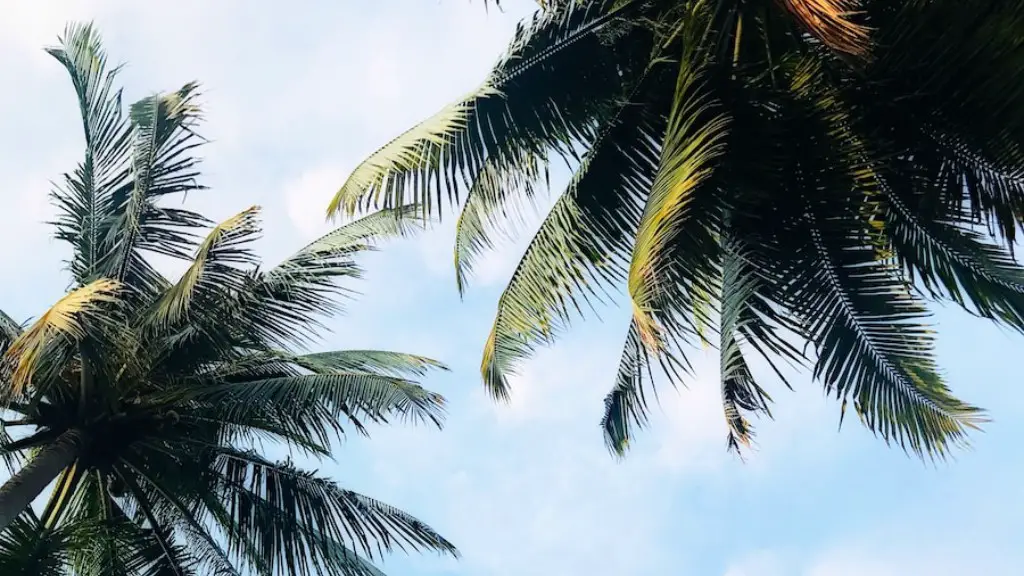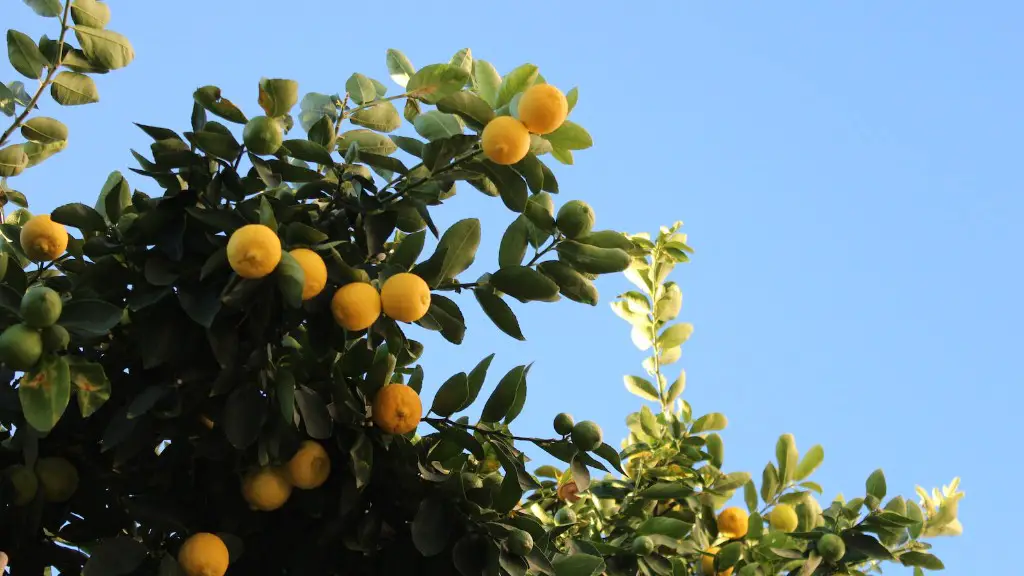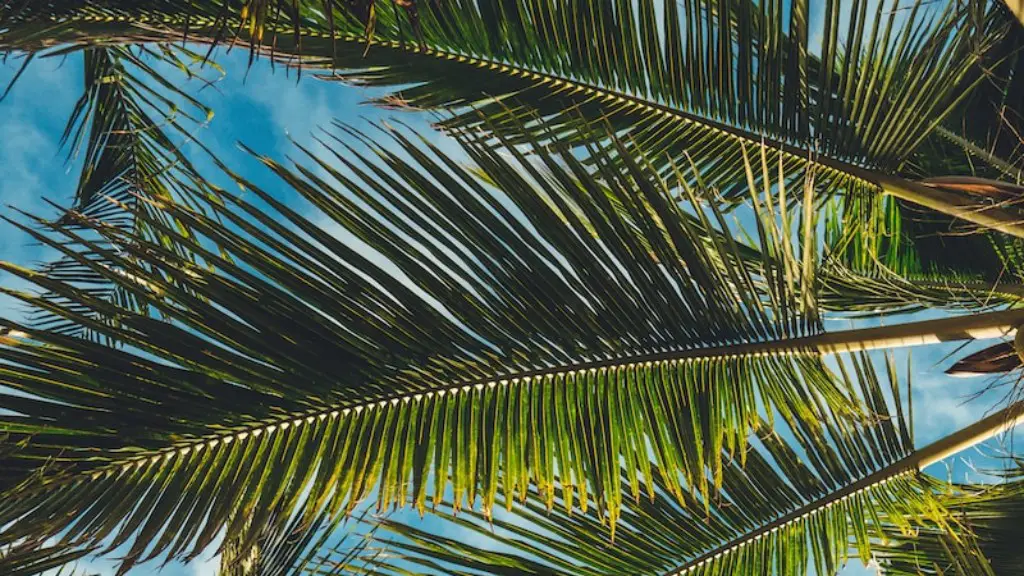Which Palm Tree Produces Dates?
Dates are an important part of many cultures around the world and eating them as a snack or part of a recipe has been popular for centuries. Many kinds of tree produce dates, but the most often used is the date palm. Oftentimes referred to as the “Phoenix dactylifera,” the date palm is a species of palm which produces edible dates.
In Arabia, dates have long been a major food source and symbol of abundance and wealth across the region. The tree is native to North Africa, the Middle East, and SW Asia and is now grown in many other parts of the world such as California and Arizona.
The date palm tree may reach a height of up to 40 feet with a spread of up to 25 feet and is generally considered a long-lived tree. Its leaves are a characteristic of many palm trees and are long, fan-shaped and graceful. The leaves are deeply divided with sharp points and form an attractive canopy of foliage.
The tree typically has a single stem, although certain varieties produce suckers and produce multiple stems. This can be a challenge when pruning and caring for the tree. Pruning should be done on a regular basis to keep the tree healthy and encourage the production of dates.
The date palm is dioecious, meaning it has separate male and female plants. For successful fruiting, both male and female trees must be planted to provide the necessary pollination. The male and female flowers are both borne on the long, graceful inflorescences and are pollinated by wind or insects.
Although it takes 3-5 years for a tree to grow to bear size, it can take up to 10 years before the tree actually starts fruiting. However, once it does start fruiting, the trees can yield up to 500 lbs of dates a year. The fruit is sweet and cantaloupe-like in size.
Growing Requirements
The date palm tree is an easy tree to grow and is considered drought tolerant and adaptable to soil types. It can survive even in poor soils and needs full sun exposure for best results. Date palms do need ample water to thrive and produce quality dates. The tree should be carefully monitored for water needs and have adequate drainage for proper growth.
Regular fertilization is also important for keeping the tree healthy and producing good quality dates. Add fertilizers with a good balance of nitrogen, potassium and phosphorous to the soil around the tree in the early spring when the new leaves begin to emerge.
When young, the date palm tree needs to be protected from high winds, hail, and any other adverse weather. Protection can be in the form of a windbreak or even a simple row of shrubs or trees on either side of the tree to shelter it.
Pruning and maintenance is important as the tree grows to maintain the overall health and yields of the tree and to keep it at the desired height. In the early stage, the terminal shoot should be pinched off and leaves pruned twice a year. As the tree matures, you may need to prune newly emerging suckers and shape the canopy.
Harvesting and Post Harvesting Process
Dates will usually ripen in the late summer to early fall months, depending on the climate and growing conditions. The date harvest begins in August and continues through September, although the exact date can vary. There are color indicators and a slight change in texture that indicates when the date is ready for harvest. Typically the upper part of the bunch ripens first, and it is harvested by cutting the stem using a curved knife.
Once the dates are harvested, the post-harvesting process begins. This can include washing, sorting, drying and packing the dates depending on the variety and type of dates. Most often, the dates are stored in a cool, dry place and should be consumed within two weeks of harvest.
Expert Insights
According to Dr. Cristina Capece, an expert in Sustainable Agriculture and Agronomy, “The date palm tree is a remarkable species – apart from its nutritional value, its graceful aerodynamic form and long life has made it a symbol of eternal life in many Eastern cultures. For thousands of years, people have enjoyed its fruits and it continues to be part of many diets today.”
The date palm tree is also widely used for landscaping and for providing a living barrier around homes and properties. “Dates are nutritious and have medicinal properties,” continues Dr. Capece. “They are also an important part of many of the world’s gastronomies and hold a special place in many cultures.”
Pest and Disease Control
The date palm tree is susceptible to a number of pests and diseases. Regular monitoring and removing damaged or diseased fronds is important. Insects such as scale and whiteflies, as well as certain fungi and bacteria, can all cause significant damage, decrease the yields and ultimately even kill the tree. There are a number of chemical and natural pest control measures as well as resistant varieties which can help to protect the tree.
Of course, careful selection of the site, adequate soil drainage and sun exposure and other environmental factors are also important for reducing the risk of pests and diseases. Regular fertilization, proper pruning and adequate care can also help to maximize yields and insure the health of the tree.
Animal Damage
Wild animals, such as birds and rodents, can also cause damage to date palm trees. Birds are particularly attracted to the ripe fruit, so netting or other control methods is often necessary to protect the dates. Rodents like rats, squirrels, and gophers can also cause damage to the roots and bark of the tree and should be controlled.
Chemical or physical barriers can be used as protection, and certain plants, such as garlic or pepper, can be planted to repel rodents and other pests. Planting certain repellant plants in a strategic manner can create a natural barrier and create an overall healthy and pest-free environment.
The Date Palm Tree as an Environmental Asset
The date palm tree plays an important role in the environment as well. It is drought-tolerant and can help to reduce erosion and desertification. The deep roots can help to stabilize the soil and conserve water, resulting in healthier soil and increased biodiversity. The tree also provides a natural habitat for many different types of birds and animals.
The date palm tree is a unique and valuable asset that has been linked to many cultures and lifestyles all around the world. As a food source and environmental stabilizer, the tree is an important part of the global food system and the health of our planet.





